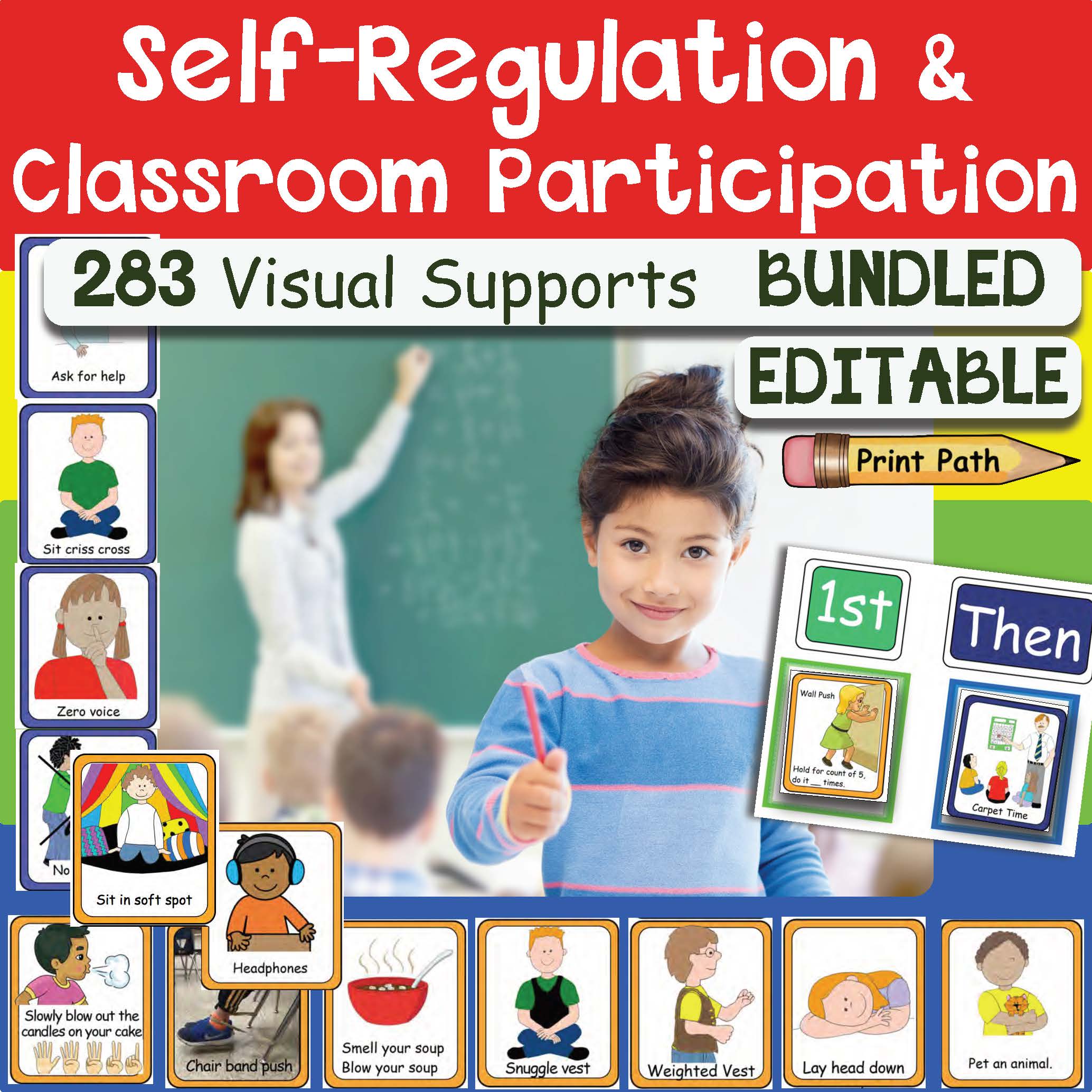What is a Visual Prompt and When to Use Them
 What is a Visual Prompt?
What is a Visual Prompt?
A visual prompt is a photograph, illustration or icon to represent a task. There are different types of visual prompts depending upon what each individual needs. For example, we all use visual prompts in our daily lives. We see an icon on the the restroom door, and we know it is a bathroom. We write a to do list and leave it on the counter – it is a visual reminder or prompt to complete the tasks.
What Are Visual Activity Schedules?
Visual activity schedules are pictures, photographs, words or symbols that are arranged in a specific order to represent the step by step sequence required to complete a task. The purpose of visual activity schedules is to increase independence, engagement, and acquisition of new skills during classroom, recreational, transition, and play activities. They help to provide clear expectations for academic, motor, social and behavioral skills.
Regardless of the situation or skill being taught, visual activity schedules usually include systematic prompting procedures to teach correct use of the materials. There are different types of prompts such as:
- verbal prompts – instructions or words to direct a person to complete the skill. It is the most commonly used prompt.
- modeling – demonstrating the skill either in person or on a video. It is the second most commonly used prompt.
- manual prompts – physical contact from a teacher to help the child complete the skill.
- gestural prompts – pointing, motioning or nodding toward the child or the objects to complete the skill.
When Do You Use Visual Prompts?
It is based on each individual on when to use visual prompts. The actual prompts are chosen to follow along the visual activity schedule to help the person complete the skills(s).
How Do You Use Prompts?
Whether your are using verbal, modeling, manual, gestural, or visual prompts there are different ways to use them.
Time delayed, graduated guidance procedures are frequently used by school staff and parents to prompt children. This procedure requires that an adult is always present during the use of the visual activity schedule to constantly monitor and evaluate the child’s responses to determine if a prompt is needed and the level of prompt to provide.
Research has indicated that this method is successful, but it can be very difficult to carry out since an adult must be present with the child at all times.
Another option is to provide constant time delay prompts. Teachers and parents determine how often and what type of prompt with be carried out in advance. Therefore, when the visual activity schedule is introduced to the child, the adults will know exactly how and when to prompt the student.
Recent research indicated that using constant time delay prompts with visual activity schedules was an effective intervention to increase engagement in young children with challenging behavior. This method is easier to carry out but additional evidence is needed to support constant time delay prompts.
References:
MacDuff, Gregory S., Patricia J. Krantz, and Lynn E. McClannahan. “Prompts and prompt-fading strategies for people with autism.” Making a difference: Behavioral intervention for autism (2001): 37-50.
Zimmerman, K. N., Ledford, J. R., & Barton, E. E. (2017). Using Visual Activity Schedules for Young Children With Challenging Behavior. Journal of Early Intervention, 1053815117725693.
Here are some resources to help create visual activity schedules:
Visual Supports: Schedules, Self-Regulation, & Classroom Inclusion – Designed by a school-based occupational therapist, Thia Triggs, this color-coded visual support system is suitable for your children with autism, emotional behavioral disturbance, intellectual disabilities, ADHD, communication disabilities, and more. Pictures are cute, engaging, and easy for children to understand. Includes 283 visuals.
Cut and Paste Sensory Diet – Download of the materials to create 2 sensory diet books, one for home and one for school with over 150 picture word cards.
Daily Routine Visual Schedules – digital download includes 70+ picture icons for Morning Routines, School Routines, Afternoon Routines and Evening Routines. The pictures are suitable for all ages. This document is in black and white. You can create routine visual schedules for all the children that you teach.
Read More about Visual Prompts and Other Techniques
Read more about how to use prompts more effectively when teaching children new skills.
Read Evidence-Based Practice: Using Visual Activity Schedules
Read What Is Prompting?

 What is a Visual Prompt?
What is a Visual Prompt?




